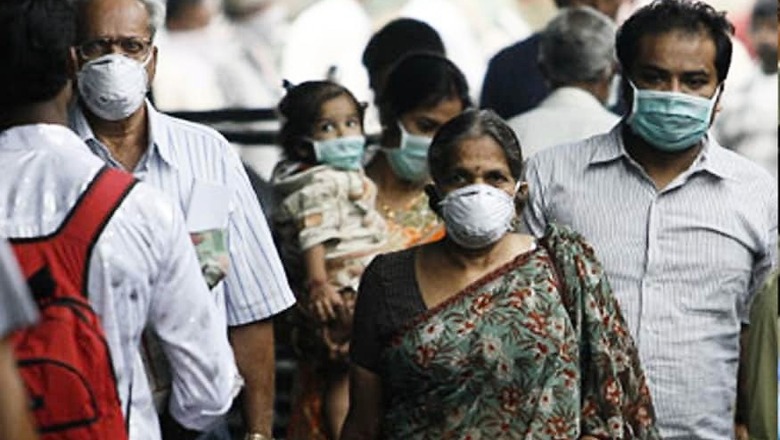
views
Nipah is one of the ten greatest global health threats in 2019 according to the World Health Organisation. Known outbreaks of Nipah have infected only around 600 cases across the world till today, but it remains one of the most feared diseases due to its very high fatality rate, nearing 100% at times.
In India, there have been three known outbreaks of Nipah: the latest in Kerala during which 21 of the 23 people affected with the virus died.
Out of the 23 cases of Nipah in Kerala - an index case, 18 confirmed cases, and 4 probable cases – all 22 contracted the virus in hospital settings, where the index case or primary cases sought care. In fact, 19 cases contracted the virus directly from the index case. Of these 23, only 2 could be saved.
However, the effectiveness of Kerala’s health authorities was in confirming the cases early and isolating the cases so that the outbreak is contained. According to an article published in the Journal of Infectious Diseases, Kerala’s effective public health response to Nipah included isolation of cases, contact tracing, and enforcement of hospital infection control practices.
Compared to Nipah, H1N1, popularly known as ‘Swine Flu’ has a very low fatality rate - but its ability to spread at an unprecedented speed has made it a major pandemic threat.
In 2009 alone, around 18500 deaths caused by H1N1 were officially reported across 214 countries.
Rajasthan is currently witnessing an H1N1 outbreak with more than 1800 people infected and 72 deaths.
India has periodic spikes in H1N1 outbreaks every few years, owing to the nature of the human immune system. When the protective effect on the community gained from the previous outbreak reduces over time, a large number of people are prone to infection.
In 2015, India had a major outbreak of H1N1 wherein, officially, around 43000 people got infected and 3000 died of the infection. The year 2017 too saw 39000 cases and 2300 deaths. Both infections, as well as number of deaths, reduced last year.
Rajasthan in 2015 reported around 6900 cases of H1N1 and 470 deaths due to the disease. In 2017, 3619 cases and 279 deaths were reported, and in 2018, 2375 cases and 221 deaths were reported through official channels. About 7%, 8% and 9% of all reported cases died in 2015, 2017, and 2018 respectively.
Latest official data indicate that till 27th January, there have been 1856 cases and 72 deaths in 2019 in Rajasthan – which is under 4% of deaths. While the number of cases is clearly high for a single month, the scale is clearly not unprecedented, and the proportion of deaths – at least for now - is lower than in past years.
Kerala, which is known to have a better public health infrastructure, and better health outcomes than Rajasthan had 1414 H1N1 cases and 76 deaths (5.3%) in 2017 and 879 cases and 53 deaths (6%) in 2018.
The current Rajasthan situation, despite the risk of a wider outbreak with many nearby states also reporting cases and a somewhat sensationalist coverage by local as well as national media, compares favourably with the Kerala numbers. Any public health alarmism around the H1N1 situation in Rajasthan is unnecessary.
The scale and spread of H1N1 in Rajasthan, its seasonal character as well as low mortality rates, similar levels of isolation of cases, contact tracing, and enforcement of hospital infection control practices as was seen during the Nipah outbreak in Kerala may not be warranted, nor will that be practical in Rajasthan.
There need not be any scaremongering. Many of the actual cases may not even get tested due to the mild symptoms which is normal. It was estimated much later that only 23% of the population infected by H1N1 during the 2009 outbreak actually exhibited symptoms of H1N1 and only 17% population had a condition severe enough to consult a doctor. Indeed, a very small proportion of patients develop severe symptoms and need respiratory support.
H1N1 can be treated effectively, and early detection and timely intervention is key. The public health system needs to be in a high state of alertness, and coordinated efforts will be necessary to make sure that the infection does not spread beyond control.
One key learning from Nipah outbreak is that most of the highly contagious infections are acquired from hospitals themselves. Last year, it was reported that in Chennai, half of the people infected with H1N1 had a history of a hospital visit, for some other health conditions. These people went back home from a clinic/hospital with H1N1.
Lessons are available within Rajasthan itself – reportedly, despite reporting 782 cases in January, only four persons have died in a district. On the contrary, Jodhpur has reported most number of deaths in Rajasthan, even with a much lesser number of cases reported.
Effective health system response to H1N1 is key, and better infrastructure and public health preparedness of Jaipur has possibly helped push down deaths by H1N1.
Surprisingly, it was reported that Rajasthan government’s five-day door-to-door screening drive to identify H1N1 patients involved sending students of BSc nursing courses in government and private colleges along with health workers for home visits without the necessary safety gear. Such mistakes can end up accelerating the spread of the outbreak rather than containing it.
Oommen C. Kurian is fellow and head, Health Initiative, Observer Research Foundation, New Delhi. The views expressed are personal.



















Comments
0 comment